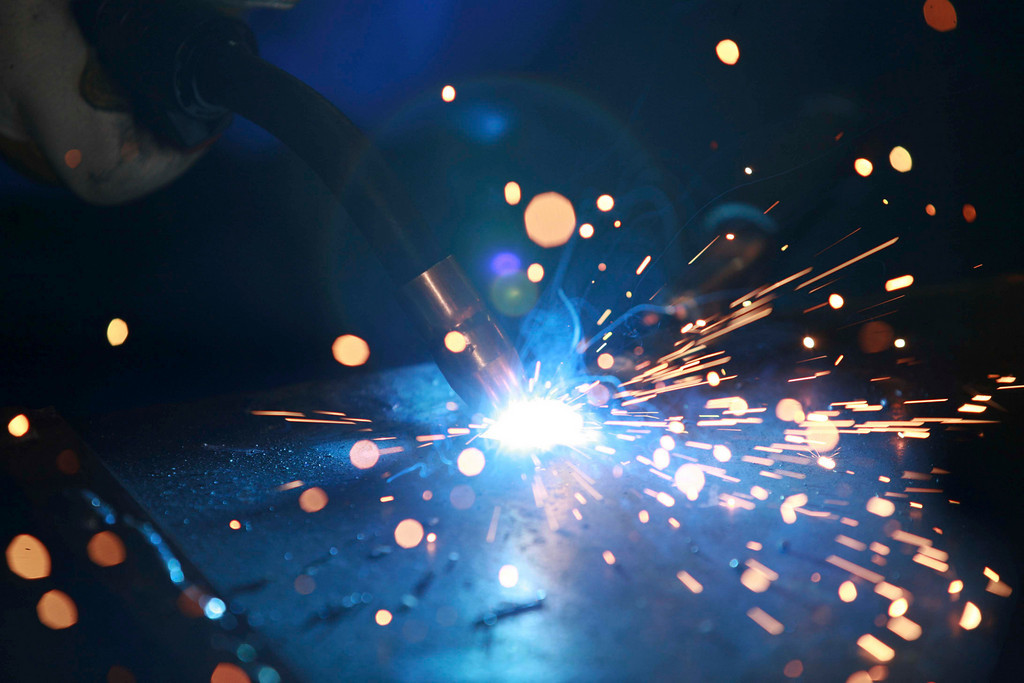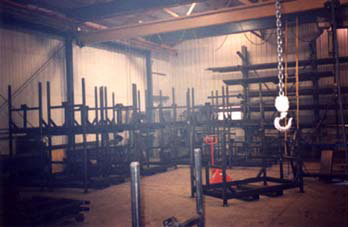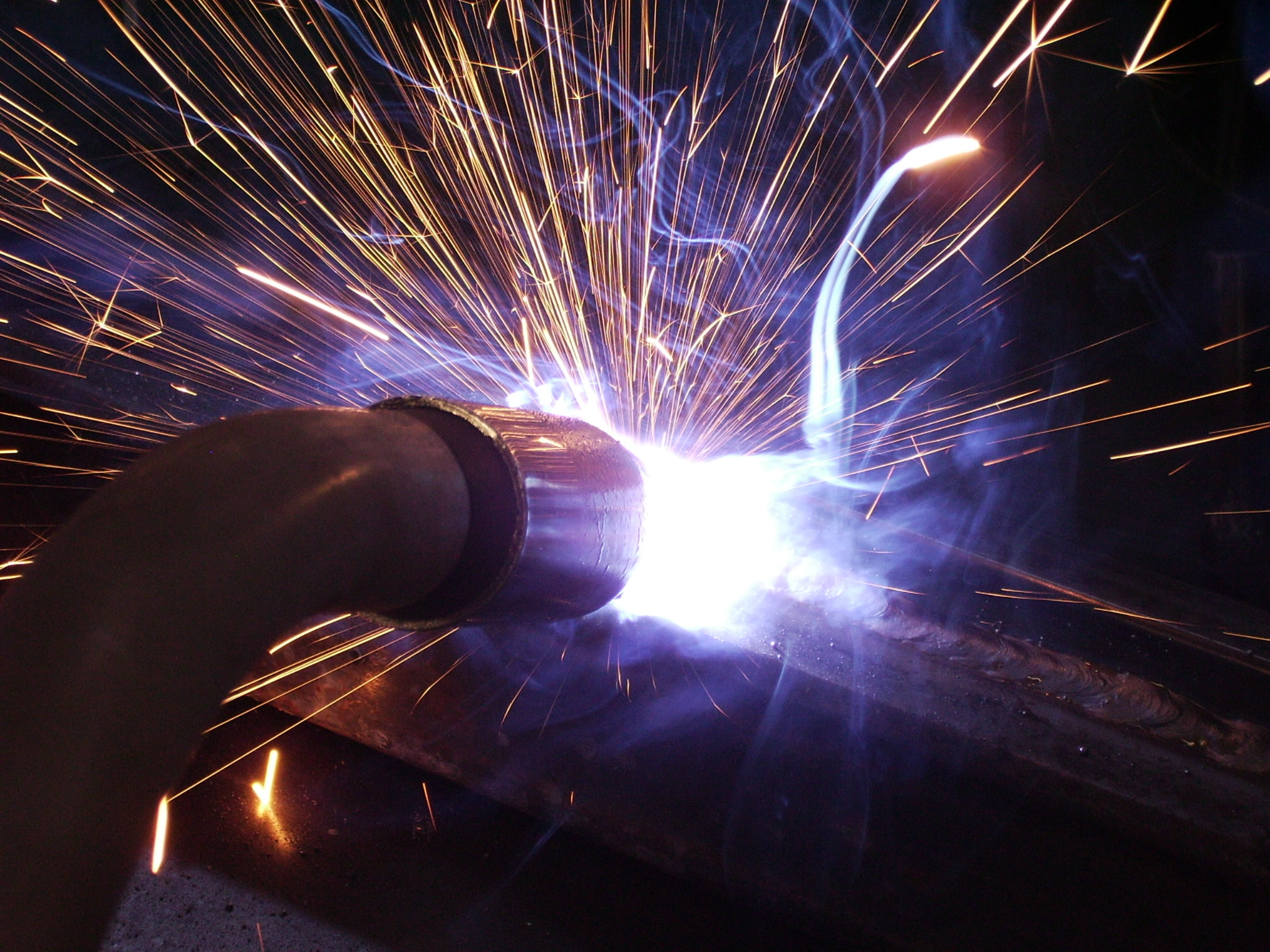Aluminum Welding
Include a description about aluminum welding and apply it to Aurora Welding & Fabrication.
CERTIFICATION: AWS D1.2 Structual Welding Code - Aluminum

[NOTE: APPLY GENERAL WELDING STATEMENT TO AW&F. MIG & TIG WELDING BASICS FOR AW&F. TIE CERTIFIED WELDING TYPES AND APPLICATIONS INTO PROCESSES: HEAVY EQUIPMENT WELDING, SHORT RUN PRODUCTION WELDING, FREE-STANDING STRUCTURES, PORTABLE WELDING EQUIPMENT. IF SPECIALTY APPLICATIONS ARE NOT LISTED ON THE SERVICES PAGE FOR LINKS, THEY SHOULD BE INCLUDED ON THIS PAGE.] ] Welding is a fabrication or sculptural process that joins materials, usually metals or thermoplastics, by causing fusion, which is distinct from lower temperature metal-joining techniques such as brazing and soldering, which do not melt the base metal. In addition to melting the base metal, a filler material is often added to the joint to form a pool of molten material (the weld pool) that cools to form a joint that can be as strong as the base material. Pressure may also be used in conjunction with heat, or by itself, to produce a weld.
Some of the best known welding methods include:
Many different energy sources can be used for welding, including a gas flame, an electric arc, a laser, an electron beam, friction, and ultrasound. While often an industrial process, welding may be performed in many different environments, including in open air, under water, and in outer space. Welding is a hazardous undertaking and precautions are required to avoid burns, electric shock, vision damage, inhalation of poisonous gases and fumes, and exposure to intense ultraviolet radiation.
Until the end of the 19th century, the only welding process was forge welding, which blacksmiths had used for centuries to join iron and steel by heating and hammering. Arc welding and oxyfuel welding were among the first processes to develop late in the century, and electric resistance welding followed soon after. Welding technology advanced quickly during the early 20th century as World War I and World War II drove the demand for reliable and inexpensive joining methods. Following the wars, several modern welding techniques were developed, including manual methods like SMAW, now one of the most popular welding methods, as well as semi-automatic and automatic processes such as GMAW, SAW, FCAW and ESW. Developments continued with the invention of laser beam welding, electron beam welding, magnetic pulse welding (MPW), and friction stir welding in the latter half of the century. Today, the science continues to advance. Robot welding is commonplace in industrial settings, and researchers continue to develop new welding methods and gain greater understanding of weld quality.
Include a description about aluminum welding and apply it to Aurora Welding & Fabrication.

This specification covers quenched and tempered high-hardness wrought steel armor plate for lightweight armor applications for recommended thickness up to 2 inches inclusive.


Gas Metal Arc Welding (GMAW) is frequently referred to as MIG welding. MIG welding is a commonly used high deposition rate welding process. Wire is continuously fed from a spool. MIG welding is therefore referred to as a semiautomatic welding process.
MIG is a non-standard term for gas metal arc welding and flux cored arc welding, according to the American Welding Society (AWS). MIG stands for metal inert gas. Inert gas being a non-reactive gas (a noble gas on the periodic table). Most GMAW procedures do not use a mixture of 100% non-reactive gas. A popular gas mixture in the United states contains 90% Argon and 10 % CO2, or 75% Argon and 25% CO2. Argon is a non-reactive gas, while CO2 is a reactive gas. The mixture is not inert, therefore, using MIG is an inaccurate way to represent the actual process being used.
A mixture containing 100% of an inert gas are used when necessary. However, the preferred term is still GMAW or FCAW.
flux cored arc welding process is nothing more than a different welding wire used in a MIG welder. What changes is the type of shielding. Just like the name states, a flux core, and that is what the welding wire has.
The difference between FCAW and MIG welding is that a flux cored wire is hollow and is filled with a flux that produces a slag to protect the weld. What this does is helps the welding wire weld faster and prevents the air from contaminating the weld. MIG welding wire is solid and requires an external bottle of shielding gas to protect the weld area.
Flux cored arc welding has two types of wires or shielding types. First is dual shielding, a combination of the flux in the wire and an external shielding gas. This is used to give a double shielding to the weld area from the air. The second is inner shield or self shielding. Inner shield is a trade mark and both terms mean that the wires flux is enough to shield the weld from any air that may contaminate the weld.
What makes FCAW so important to defense contractors is the amount of weld it can deposit in an hour. When comparing MIG welding to FCAW the deposit rate of weld per hour has a huge gap. Flux cored arc welding can easily deposit three times the amount of weld then MIG welding per hour! On top of the weld deposit rate, the FCAW process can weld in windy conditions and still produce high quality welds.
GTAW Gas Tungsten Arc Welding : Gas-metal arc welding in which tungsten is the agent of fusion.

If you're responsible for the welding of steel decks, panels, storage racks, and stud and joist framing members, to name a few applications, this code helps you to effect consistently sound welding of joints. One of the primary objectives of this code is to define the allowable capacities used in sheet steel applications in which the transfer of calculated load occurs. Includes allowable load capacities, details of welded connections, prequalification of WPSs, qualification, inspection, stud welding, and a helpful interpretive commentary. ANSI Approved.

This code covers requirements for selding structural stainless steel assemblies.
Covers requirements for welding stainless steel structural assemblies/components (excluding pressure vessels or pressure piping) using gas metal arc welding, shielded metal arc welding, flux cored arc welding, submerged arc welding, and stud welding. Allows prequalified Welding
Procedure Specifications for the austenitic stainless steels based on considerable experience with the most widely used stainless steels. Sections include design, procedure and performance qualification, fabrication, inspection, and stud welding.

Bacon ipsum dolor sit amet nulla ham qui sint exercitation eiusmod commodo, chuck duis velit. Aute in reprehenderit, dolore aliqua non est magna in labore pig pork biltong. Eiusmod swine spare ribs reprehenderit culpa.
Boudin aliqua adipisicing rump corned beef. Nulla corned beef sunt ball tip, qui bresaola enim jowl. Capicola short ribs minim salami nulla nostrud pastrami.
Boudin aliqua adipisicing rump corned beef. Nulla corned beef sunt ball tip, qui bresaola enim jowl. Capicola short ribs minim salami nulla nostrud pastrami.
SMAW Shielded Metal Arc Welding : Shielded metal arc welding (fig. 3-3) is performed by striking an arc between a coated-metal electrode and the base metal.

AWF's specializes in short run production welding rather than volume production (maybe link to Aurora Manufacturing). Short run production is ts not usually defined by an actual length of time. It refers to the time frame in which only variable costs can be changed, but not fixed costs.

Gas Tungsten Arc Welding (GTAW) is frequently referred to as TIG welding. TIG welding is a commonly used high quality welding process. TIG welding has become a popular choice of welding processes when high quality, precision welding is required.
In TIG welding an arc is formed between a nonconsumable tungsten electrode and the metal being welded. Gas is fed through the torch to shield the electrode and molten weld pool. If filler wire is used, it is added to the weld pool separately.
OR:
Tig welding or ( Tungsten inert gas) is a method of welding various thin gauge materials such as (stainless steel and aluminium allies) together which doesn't really use a lot of energy or produce large amounts of heat! or the need to spend extra time cleaning the weld after completed.. The name is derived from the actual material used to make the electrode which carries the weld current that forms the arc weld pool. This is called tungsten.
The welding process is reliant on a AC welding machine to produce the AC weld current which is termed amps!. The tungsten electrode which can be 1.6 2.4 or 3.2 mm in diameter being sharpened to a point and then inserted into the welding gun.. (electrode diameters are important because to small or two large will result in sticking or oblation of the electrode and poor arc performance.
A shielding gas usually Argon but can have other inert gas mixes (helium or krypton) depending on the type of material to be welded together, and a filling wire (usually of the same type as being welded) which is hand fed into the weld pool In a similar fashion to gas welding.

Identify portability capabilities to operate at the client's site.
